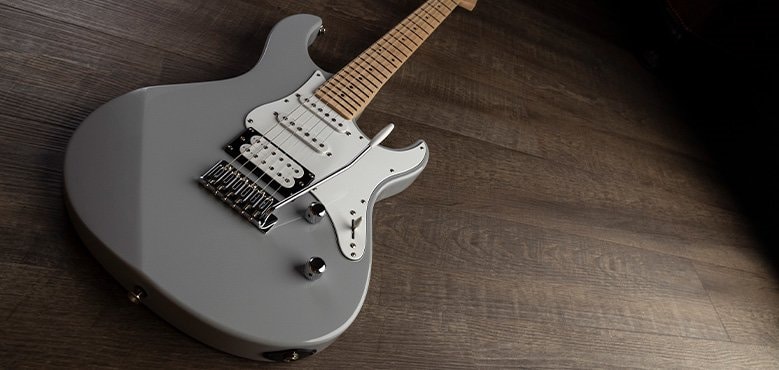How I Write a Song?

How I Write a Song? Follow our guide to the Basics of creative Songwriting
Millions of people dream of writing an iconic, history-making song. However, writing a song is a challenging and arguably mysterious process. How do you write good music? There’s no simple answer for creating a good song.
Some of the world’s greatest songwriters—such as John Lennon, Paul McCartney, Elton John, Neil Young, Barry Gibb, and Bob Dylan—had unique and individual ways of creating music.

In truth, the most important way to write music is to start now. Whenever you have an idea, try and draft it onto paper asap. That said, your song needs to include a catchy melody, tell a story, and build a connection with the listener—which takes practice. Your first song won’t be your best, but writing good melodies becomes easier.
This ‘How I write a Song’ essential guide will give you some critical tips for creating brilliant songs.
The Basics of Writing Your Own Songs
Find an Excellent Song Idea
Every song you ever listened to started with an idea. Some of the greatest songs began with the most complex ideas; others started with simple ideas. Here’s the moral of the story: You only need an IDEA.
Let’s look at Paul McCartney, the most successful songwriter ever. He’s written many legendary songs. He felt sorry for John Lennon’s son—Julian—after John divorced his mother.
As a result, he had the idea of creating an uplifting song that would cheer Julian up. So, he wrote Hey Jude, which arguably became the single greatest anthem of all time.
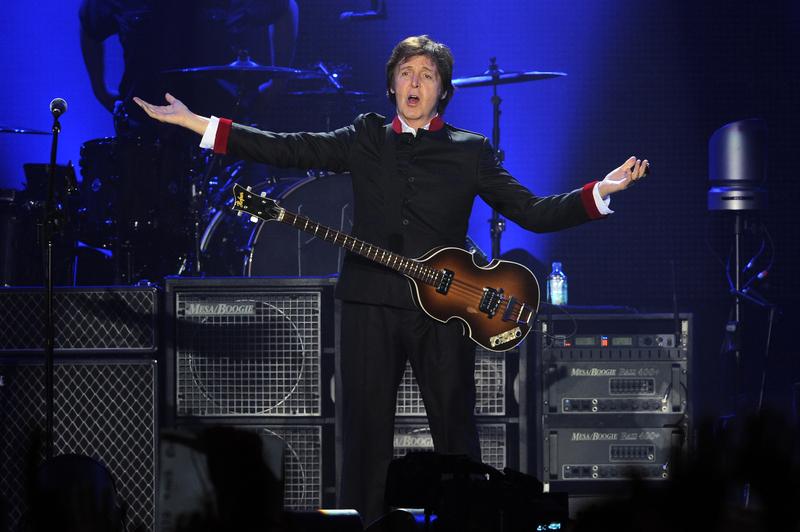
But Paul’s greatness didn’t stop there. One of the most famous songs from The Beatles—Let It Be—was written by McCartney during a period of deep stress as he realised the band was about to separate. Sadly, Paul’s mother died of breast cancer when he was a teenager.
However, during his struggle, he saw a vision of his mother telling him to let it be during a dream. Then, he woke up and wrote the iconic hit. Do you see how these songs start with a simple idea? There are no rules. If you think your song could be a good idea, write it down on paper.
With that said, you need to transform your idea into a story. The best songs are about people and everyday situations. In these songs, the story is often incredibly straightforward: two people fall in love and then break up. Sure, it’s simple; yes, it’s often cliche. But, most importantly, people can relate to it.
Here are some fundamental questions you need to form your idea:
- Who will sing the song?
- Who will they sing to?
- What will they try to say?
So if you’re struggling to find a good idea for a song, ask yourself those fundamental songwriting questions.
In addition, there are two common songwriting formats beginners use to create solid ideas:
- A song that’s sung from one person to another (commonly called a direct address song).
- A song that’s sung by one person to anyone willing to listen (commonly called a world song).
Of course—these aren’t the only song formats, but they’re two of the most common. They’re almost always good ideas to rely on. These are the basics of songwriting and where every musician begins. The same rules apply to most music genres.
Choose a Lyrical Hook
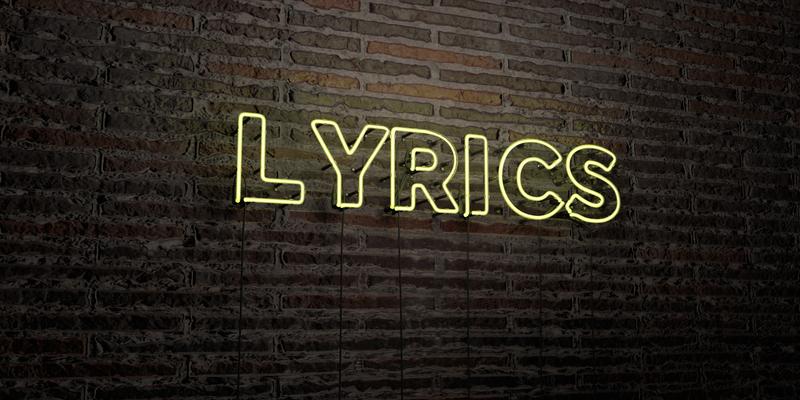
Now you’ve chosen the perfect song idea—it’s time to create the ultimate lyrical hook. The word hook can describe any memorable or catchy part of the song.
When Paul McCartney first thought of Hey Jude, he started murmuring the ‘Na Na Na Na Hey Jude’ part of the song to himself whilst driving his car through London. He knew he had the perfect lyrical hook; he wasn’t wrong, either.
But it doesn’t matter what the hook is; it simply has to encapsulate the chorus.
To create a good hook, you need to brainstorm a few words and phrases from the perspective of the person singing it. The words and phrases need to sound like natural ways of human expression. It could take a while to think of an ideal lyrical hook, but that doesn’t matter. The lyrical hook only needs to be seven or eight words. Get thinking now.
A lyric writing guide is perfect for helping you begin.
Write Down the Chorus Lyric
Welcome to one of the most important parts of the songwriting process: Creating the chorus lyrics. Once you have the song idea and the lyrical hook—this is the next part of your creative process. However, again, there’s no definite law on writing chorus lyrics; they come in different sizes and styles. The most common length for a chorus lyric is around eight lines.
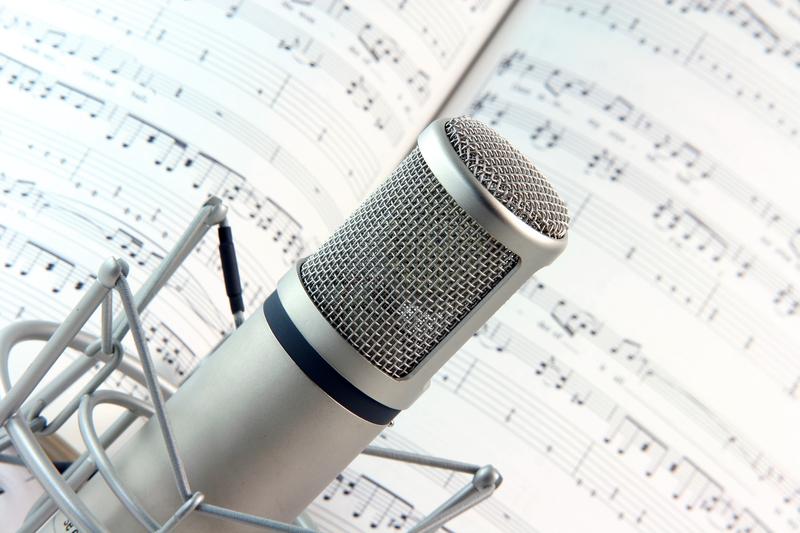
Your chorus must achieve these three things:
- State the primary idea of your song
- Include the lyrical hook
- Ensure the lyrical hook doesn’t feel forced
If your hook is short, you’ll need to fill it into a long line. If your hook is long, you’ll probably fit it into the whole line without worries. From here, you’ll want to build a complete lyric around the lyrical hooks. It’s a complete trial-and-error process, so don’t worry if you struggle to build complete lyrics at first.
In addition, if you want to add some rhymes into your chorus—which is almost always a great idea—you should stick to a simple rhyme scheme. Remember, your lyrics don’t need to rhyme, but it’s a good idea—especially if you’re a rapper.
Don’t spend weeks or months trying to perfect the perfect chorus lyric. In most cases, simple phrases and words are perfect. Additionally, don’t worry if your first draft is incredibly awkward; that’s entirely normal.
Once you’ve got your chorus lyric, you’re ready to create some excellent music. And there are three primary parts to this step: writing your chord progression, writing the chorus melody, and writing your chorus accompaniment or chorus groove.
Create Your Chorus Chord Progression
The best songwriters are masters of creating the chorus chord progression (or harmonies). It’s the foundation of the song. So if you’re unsure about the sound, the chorus chord progression is an excellent place to begin. Simple chord progressions are very common in songwriting and often work great.
One of the best ways to create a chord progression for your song is to write a four-chord progression. They’re chord progressions that are four chords long, one chord per measure, that you can repeat many times over. Although that might sound repetitive, four-chord progressions are an excellent way to create songs.
If you’re a beginner, you probably don’t have a strong understanding of music theory. But that’s okay; you can learn. However, there’s a common chord combination—commonly called a chord palette—you should stick with:
- If you’re writing with a DAW or a keyboard instrument, you should write in C major and focus on the chords C, G, F, Am and Dm.
- If you’re writing on a guitar, you should write in G major. Focus on the chords G, D, C, Em, and Am.
Whatever chord progression you choose, you only have to try out some four-chord combinations. Play them until one sounds good to you. Like lyric lines, there are many chord lengths a chorus’s music can be. The most common length is sixteen measures.
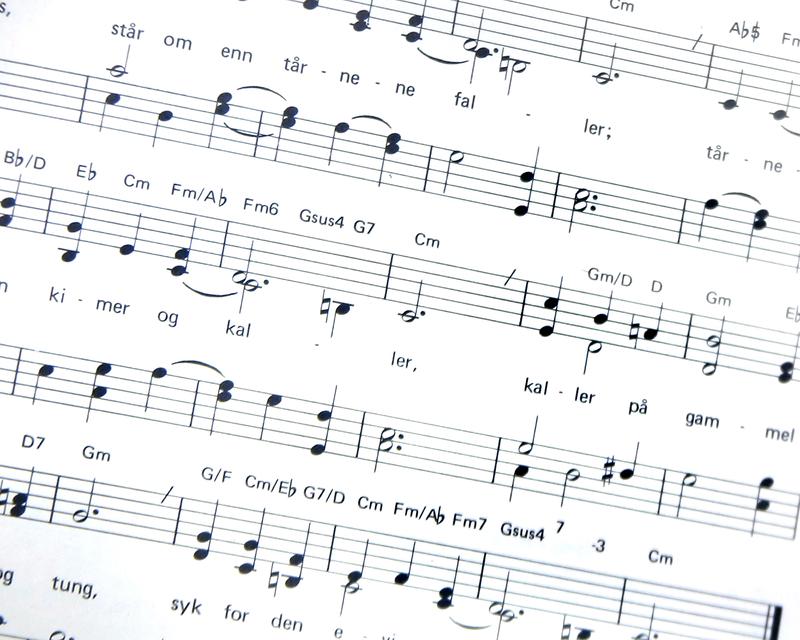
Create the Chorus Melody
Once you’ve created the chord progression, it’s an excellent time to add a topline or vocal melody. The only way to write an excellent melody is to get your hands dirty and try many options before you have something you like. So where do you begin?
First, try to create the chorus melody rhythm only. You should create a rhythmic version without any pitches. That’ll help you map your chorus lyric onto the chorus progression you just wrote. Other than that, give your melody as much repetition as possible; that’s what makes a melody catchy. Each time your lyrical hook comes up, you should give it the same or similar melody.
Last but not least, the way you fit a melody to a chord progression is that your melody is going to focus on one or more of the notes in the chord that are currently active. Therefore, you’ll want to focus your melody on either a C, E, or G chord if your first chorus’s measure is a C chord. If you have musical expertise, you can do this intellectually. However, you can also do it instinctually by using your ears.
Here are some additional tips for the chorus melody:
Use Higher Pitches
The primary purpose of a chorus is to stand out and grab the attention of a listener. Regardless of whether it’s a dance tune or a heavy rock song, a songwriter must deliver the point emphatically. The songwriter can achieve this by raising the pitch of their voice. By saving the highest pitches until the chorus, you communicate that this is the most meaningful part of the song.
Use More Space
If you separate each melodic phase from the next, there’s more chance you’ll catch the listener’s ear. That’s because they’re left waiting for the next line wondering what might happen next. Therefore, give each melodic phrase more space than in the previous verse to ensure your listener listens to your ideas more carefully.
Use Repetition
There are various ways you can use repetition in a chorus. An excellent way to use repetition is by repeating a hook line, and title with the same lyrics and melody. You can also repeat a melodic phase while changing the lyrics or repeating a lyric phrase while changing the melody, which is called ‘varied repetition’. As a result, it’s an excellent way to create swing lines.
Write the Chorus Groove
Finally, it’s time to create the instrumental parts of your chorus. In songwriting, you can help create the instrumental parts of the song by writing grooves, which are ideas you can repeat over again on a changing chord sequence. Most grooves are based on straightforward figurations or simple chord progressions.
Of course, if you’re more experienced, you can create something more intricate. However, complicated grooves aren’t always better grooves. The most important thing is to create a groove that matches the mood or vibe of your song. You’ll want a gentle groove if you’re writing a soft love song. However, you’ll want an angrier, more dramatic groove if you’re writing an angry breakup song.
To begin, brainstorm a few grooves that could work for your song. You can use whatever instruments you have available, such as guitars or a piano. From the various ideas you’ve brainstormed, pick the one that matches your song’s mood the best. Most grooves are only one or two measures long, so they don’t need to be complicated.
Once you’ve found the perfect groove, you only need to repeat it over your chord progression until you’re fully happy.
Create the Verse Chords
Once you’ve completed the chorus, you’ve finished a significant portion of your song because you’ll repeat it throughout. Now it’s time to turn to the verses of your song. Like choruses, you should write 8 lyric lines and 16 measures of music because they’re perfect for a beginner songwriter. In a verse-chorus song, the verses have the same music with different lyrics each time.
Writing the verse chord progression is similar to writing a chorus chord progression. Although there are indeed many songs that use a standard four-chord progression throughout the song, you can write fresh chords for each verse. You can use the chord palette from earlier to find a new four-chord progression for your verse.
- If you’re writing with a DAW or a keyboard instrument, focus on the chords C, G, G, Am and Dm and write in C major.
- If you’re writing with a guitar, focus on the chords G, D, C, Em, and Am and write in G major.
Repeat the chord progression four times to fill the 16 measures and you’ve finished your chord progression.
Write the Verse Groove
Once you’ve finished the verse chords and groove, it’s time to write the first verse lyric. However, now is the perfect opportunity to create the verse groove. The process is similar to creating a chorus groove, but you’ll need a few more subtleties.
It’s a good idea to keep your verse groove low-key and simple. That way, you can ensure your chorus hits home with the listener. If you start the verse with too much energy, you’ll have a challenging time taking it anywhere. If you’re writing on a piano or guitar, think about creating low-key chord grooves.
Second, you don’t want to make your verse groove too different from the chorus groove. You want both grooves to feel part of the same song with slightly different energies. An excellent way to achieve this is by taking an element of your chorus groove and placing it into something in your verse.
For example, if your chorus groove has an incredibly distinctive chord shape, you could use it in your verse groove. It’s an excellent way of ensuring your grooves feel like they belong together. Once you’ve chosen your groove area, you’ll need to use it throughout the entire verse section. You should take the essence of the groove idea and repeat it throughout the chord changes. You don’t need to repeat it exactly the same; it’s enough to keep the same feeling or vibe.

Build the Verse Master Plan
There’s a thing called the ‘second verse curse’ in the songwriting process, whereby the first lyric of the verse comes out easily—but you haven’t a clue how to follow it up with the second lyric. Don’t worry; that’s normal. There’s an excellent solution to this problem: the verse masterplan. Most songs were built with a verse master plan.
The verse master plan is an outline of what you’ll talk about throughout your verses. It gives you a superb starting point to begin each verse lyric from. It’ll also help you to expand your song’s main idea and stay on topic.
You should think of two related, yet two different subtopics or focal points for each of your verses. In a love song, for example, you could write the first verse about a first date and the second verse about a second date. Simple, right? That’ll help you build the song and stay on topic. Alternatively, you could choose an ‘I’ perspective in the first verse and a ‘you’ perspective in the second verse.
The possibilities are endless. The only thing that matters is that you have a strategy in place for the entire song, and you can do that by brainstorming your verse master plan right now.
Create the First Verse Lyric

Before you write any lyrics, you must know that it can be challenging. Many musicians suffer from writer’s block and go weeks—if not months—without writing any meaningful lyrics. However, don’t let that get you down; you should take your time, relax, and let your creativity flow, regardless of how frustrating a mental block can be.
To make things easier, you should create a lyric brainstorming idea for all your verses. It’ll help you create new material for each verse—even though it won’t write the lyrics. All you need to do is think of various phrases and words related to the theme of your song’s first verse.
For example, if your first verse is about a first date, you can write words like restaurant, wine, high heels, and dress. Your goal should be to write 50 to 100 words. The more words you come up with, the easier it’ll be to write your lyrics.
Remember, writing lyrics is a trial-and-error process. You’ll write terrible lyrics; you’ll write incredible lyrics. Either way—you must push through. It’s also important to write a strong opening and closing line. That’ll ensure you start and end the verse strongly, which can emphasise the chorus and the song structure.
Write The Verse Melody and Verse Build
If you’re looking to write music, creating the verse melody is essential. Here’s the good news: The process is almost identical to writing the chorus melody. You should improvise your melodic lines over the chord progression until you have something that works.
If it helps, you can write down the verse melody rhythmically first. Figure out whether the rhythm fits over your chords before you add any notes. You should know that verse melodies tend to be more conversational and looser than chorus melodies. You’ll need to make a statement during the chorus, but you’ll want to make the verses feel more relaxed and homely.
Once you’ve built the verse melody, it’s time to create a verse build. Your verse build helps drive extra energy into the chorus. As a result, it gives your chorus more energy. Almost every great song in history used a mini rise and fall between the verse and chorus.
One way to do this is by adding a gradual crescendo, which is an increase in volume in the second half of your verse. By boosting the volume or dynamics of the groove, you’ll help the end of the verse feel like it’s building into the chorus.
Here are some of the other ways you can create this effect:
- Make the grooves feel busier rhythmically
- Writing fuller and thicker chords
- Adding extra layers or tracks in a DAW
- Creating a more intense and busier percussion track

You should listen to your favourite songs and see how they achieved it. Whatever you do, make sure you’re happy with your verse grooves. They’re key to writing good music that engages the listener.
Create the Second Verse Lyric
So now it’s time to use that excellent verse masterplan you created and build your second verse song lyrics. The process is almost identical to the first verse lyric, but now you must focus on a slightly different topic than the first. So spend some time brainstorming phrases and words that are related, yet slightly different, from the first verse lyric.
Your second verse lyric must use the same rhyme scheme and the same syllable pattern in each line. Some musicians will remove a syllable or two and adjust their verse melody accordingly, but that’s not always ideal. You should also use structural repetition and matching between the verses to your advantage.
Add a Bridge
Now you’re moving to the last major section of the song writing process: the bridge. If you use a bridge when writing music, you should place it in the classic spot after the second chorus. The transition between the verses and choruses may become dull and predictable, but that’s why you may use a bridge to make it feel unexpected.
The key to writing a good bridge is simple: You need to make the song go somewhere new. It should provide the listener with a nice surprise. For example, it could jump back in time or forward. In addition, it could be a general comment about what your song is about. Alternatively, you could create a breakdown bridge, which is where the lyrics stop giving new information, and the song does something fun.
You always want the music of your bridge to take you somewhere new. This often means you must create a new melody or chord progression. However, you could create one from the grooves of the other parts of your song. If you wrote 8-line or 16-line sections for the rest of your song, you can do the same again during the bridge.
Finish Your Intro and Outro
Finally, you should figure out how to start and end your song. Although it’s the final step, it’s also arguably the most important when you write songs. There are many ways you can write an intro or outro, but you should stick to the simplest method when you’re just starting.
One of the easiest and most effective ways to write an intro and outro is by creating a short section before your first verse. For example, you could repeat the first four measures of your song’s verse groove before the first verse begins. A prime example is “Shape of You” by Ed Sheeran. This song is how 80-90% of intros are created.
However, there are two common techniques for writing your own songs outro. The most popular method is rounding off your song by adding a measure or two with a brief written outro. That could mean adjusting the end of your chorus so it ends on a held note or a chord. You’ll have to try a few different versions before finding the right one.
Another way—albeit a much less common way—to create a repeat and fade. That’s where you’ll repeat the final chorus an additional time and make it fade out. That option works best for produced or recorded music; you can’t do it live. Michael Jacksons’s “Don’t Stop Til You Get Enough” is a classic example of a brilliant fadeout outro. However, many other memorable songs include it.
Top Tips for Writing Songs
1. Record At Any Moment of Inspiration
If you’re looking for songwriting tips, this might be the best one. You should always begin writing the moment you experience a creative spark. The worst possible thing for a songwriter is thinking of an incredible song idea, but forgetting it one hour later because you didn’t write it down. Lyrical ideas and great songs don’t always come easy, so you must take advantage of those opportunities.
2. Work With Other Musicians
If you’re suffering from writer’s block—which happens to everyone at some point—you should work with other musicians to find excellent ideas. Show them what you’ve written so far, and how you want to improve it. Getting an outside perspective can be crucial when trying to get the best out of your music, and two heads are often better than one. It’s always essential to get the best songwriting advice, but ensure you choose the right songwriting splits when working with others.
3. Keep It Simple and Build On It
Keeping your track simple is crucial to growing as a songwriter. Some complex songs started with a few chords on a simple acoustic guitar. You can add drums, bass, and strings after you write the basics. Trying to write a complex song when you’re starting is almost always a bad idea.
4. Always Take Breaks When Writing Lyrics
You should always take breaks when lyric writing. It can be challenging to find musical ideas on your musical journey, and burning yourself out during the creative process will stifle your work. Instead, you should relax and take yourself away from any stress when you feel writer’s block. You can gradually start writing a few songs once your creativity returns.
5. Practice Chord Progressions
Creating excellent chord progressions is a way to separate yourself from other songwriters. A chord progression creates an emotional journey between the beginning and the end of the song. Like an excellent book, it starts with an introduction, has a middle, and is resolved by the end.
6. Ask For Feedback
Losing sight of how good or bad your song is can be easy when you’ve spent hours trying to craft it. You need someone to give you honest advice about your song, which doesn’t need to be a musician; it can be family or friends.
7. Write From Personal Experience
For most musicians, the best songs come from personal experience. For example, Adele’s most successful songs were from her traumas. Whether you’ve been through hard times or great times, you can write songs that convey these feelings and experiences. An excellent way to learn how to write lyrics is through a lyric writing course.
Final Thoughts
Writing songs is a mysterious process that takes time, patience, and diligence. As with any creative process, you need to fail, fail, and fail some more before achieving greatness. However, the key to becoming a good songwriter is having an excellent mentor.
One of the best options is learning from online songwriting courses from the comfort of your home. With online songwriting courses, you can break down each module and master the process slowly and effectively. They have tips from expert musicians to help you truly find your creative spark.
From the blog
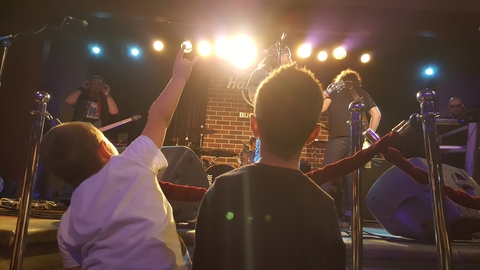
Rockstars in Training: The Best Kids’ Electric Guitars for 2024

Redefining Your Riffs: How Electric Guitar Strings Shape Your Sound
